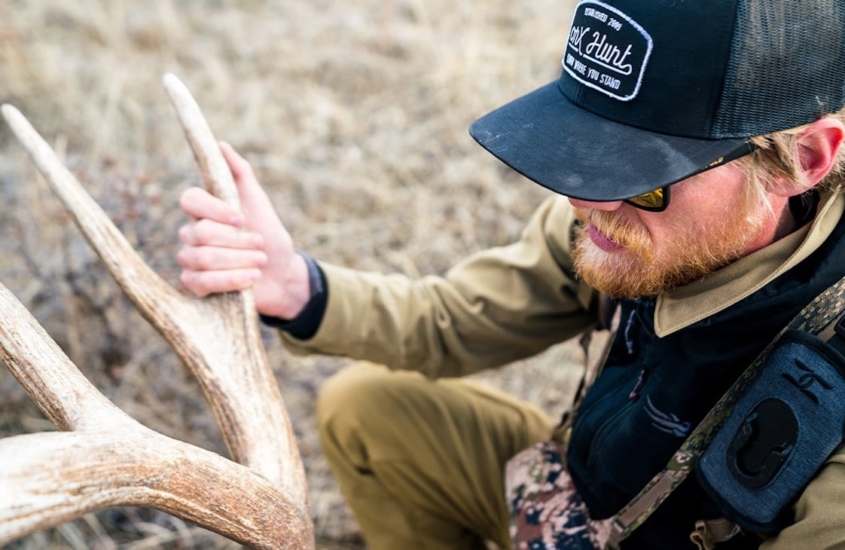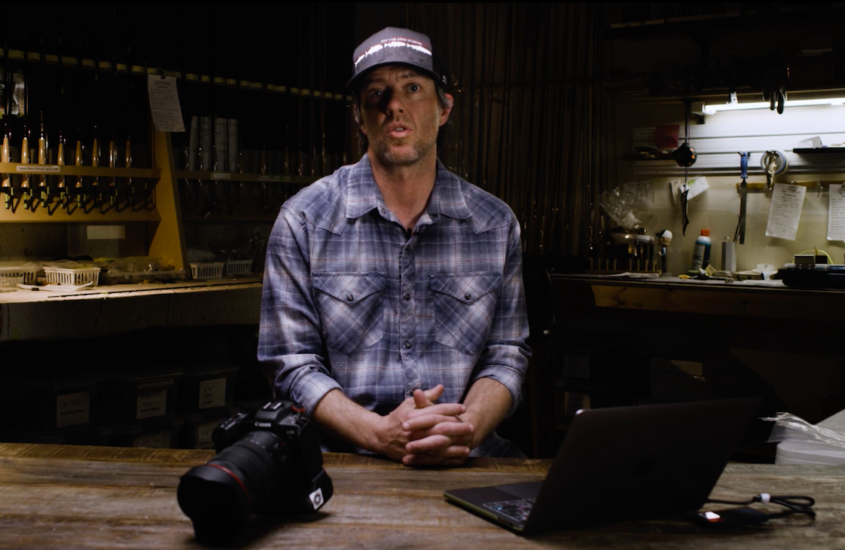By Tom Brown III:
Purchase Tom’s Survival Masterclass here.
People often ask me to list what I think are the most essential “outdoor skills.” These are skills that are applicable no matter what you are doing in the wilderness. One that is always at the top of the list is stalking and movement. Whether you are hunting, fishing or only out in the wilderness to get away from the craziness that is modern society, how we move is incredibly important.
As hunters, we want to be able to get as close as we possibly can to the animals we pursue, when fishing it’s essential to approach the river quietly so as to not spook the rising trout feeding along the bank. Even if we are just out on a hike, I truly believe in the importance of creating as little disturbance as possible. When we do so, nature will welcome us and show us some magnificent sights.
Because we live in a fast-paced modern society, we are trained from an early age to move quickly. The problem arises when we try to enter nature in that mindset, we become an alien invader, causing everything to flee or hide from us. I have seen this happen countless times. I’ll be sitting under a tree or tucked into a thicket observing the wonders of the natural world, only to watch a ripple pass over the landscape. Whereas moments ago, the birds, squirrels and deer were feeding casually, all of a sudden they go on high alert, then turn and flee. Anytime I have seen this happen, I can guarantee that someone has entered the woods, and the cadence and speed of their movement have gone above the “baseline.” The baseline is the overall sound and movement of an area. You will be most effective if you match your movements to baseline.
Let’s take a trip back in time and visit our hunter-gatherer ancestors. Here was a group of migratory people, navigating the nearly pathless wilderness. They had to be stealthy and move with the ebb and flow of the landscape to be effective at hunting. There are many accounts of early explorers of the Americas observing native peoples stalking to within inches of the animals they were hunting before loosing an arrow or throwing a spear.
If our ancestors weren’t quiet, they wouldn’t get close to animals, but they may also make enough noise to attract predators. We haven’t always been the apex predator that we are now.
When it comes to modern hunters, the stalking and movement skills have taken a back seat with the advent of compound bows, tree stands and scoped high powered rifles. You do not need to be very quiet to shoot an animal at 300 yards with a rifle or to sit in a tree stand. I choose to hunt with a longbow and on the ground. I want to get as close as I possibly can to the animals I hunt. Doing so connects me to the landscape and the animal in an intimate way.
To teach you a better way to move, I first need to tell you what is wrong with the way modern humans move. Imagine a person standing on a street corner, waiting to cross the street. As they initiate movement, they throw their head forward, and in a blind panic, their body is trying to catch up with their head. When we initiate movement in this way, it causes us to take very long strides. Those long strides cause us to hit with heavy heel-to-toe footfalls while landing on a leg with a locked out knee. Not only are these footfalls loud, but they are also extremely damaging to our bodies. Modern humans are plagued with all sorts of physical problems, from bad ankles and knees to shin splints and lower backs that hurt all the time. Many of these problems stem from the way we walk.
Another problem arises in our subconscious mind. Our brain always wants to protect our bodies from damage. Modern humans are moving so fast that we commit all of our weight to each step as soon as we take it. When moving this way, there is no room for error. To protect your body, your brain will keep the eyes focused on a 45-degree angle to the ground to spot obstacles in our path that may cause injury to our bodies. You would be surprised how many injuries occur when, for one reason or another, a person’s vision is stolen from the ground in front of them by something as simple as a full moon!
So riddle me this: If we are moving way too fast, taking long strides and hitting with loud, heavy heel-to-toe footfalls while always staring at the ground in front of us, how can we expect to get close to, or even see any animals in the wilderness? Many animals hear us coming from a great distance away. We scare birds, causing them to send up alarm calls, further alerting the animals to our presence.
Now, let’s talk about a different way to move. The first and most important thing is that we need to learn to slow down. This is perhaps the most crucial piece of advice I can offer. When we slow down, we make less noise. Nature, as a whole, moves slowly. We need to do the same. It’s also necessary to keep our center of gravity low. The easiest way to achieve this is to make sure we keep our knees bent a little bit. Most modern humans are constantly both standing and walking on locked out knees. Our knees are meant to act as shock absorbers. They cannot do the job properly if they are locked out.
We also need to shorten our stride to prevent the heel-to-toe footfalls I spoke of earlier. Another benefit of a shorter stride is that instead of committing all our weight to a step as we are taking it, we can use our feet to “talk” to the ground. Before I shift my weight into my next step, my foot is feeling the ground, making sure where I am placing my foot is a good spot that isn’t going to be noisy or cause me injury.
Once my foot makes contact with the ground, there is a dialogue happening between my brain, my foot and the earth. Only when I’m sure of my footing will I then transfer my weight and move into the next step. The magic happens here. Since we are using our feet to talk to the ground, we no longer need to be staring at the ground in front of us constantly. Our eyes can be up and looking around.
You will be amazed at how much more you will see when moving this way.
The more you practice this, the more effective you will be. Eventually you will start to naturally match your movements to the ebb and flow of what’s going on around you. Using these techniques can allow you to get incredibly close to wildlife. I have, on many occasions, been able to sneak up on and touch many different species of mammals and birds. I also have countless students who have been able to achieve the same result.
A hidden benefit of changing our movement style is how much better it is for our bodies. Eventually, you will start to adapt some of these techniques to your movement style as a whole. Your body will thank you for it.
Stay tuned for part two, where Tom offers seven tips to help improve your stalking and movement.
Episode #: 97 (click to listen) and 98
Duration: 1 hr 18 min and 1 hr 24 min
Topics Discussed: Stalking tactics, tanning hides, fire-starting, wilderness survival, tracking, observation and more!
Bio: Tom Brown III, also known as “T3,” has been a life long student and practitioner of primitive living skills, wilderness survival and nature connection. Born in New Jersey in 1978, he grew up learning the skills our ancestors used to live close to the Earth from his father, Tom Brown Jr, founder of the Tracker Wilderness Survival School. Growing up at the Tracker School showed him the profound effect reconnecting people to nature can have not only on the individual but on the planet as a whole. After spending a few years wandering across America, he has spent the last 20 years passing on the skills he learned as a child. Currently Tom lives in Oregon and works with Trackers Earth as an adult educator and land steward. When not teaching or writing, Tom is an avid fly-fisherman, traditional archer and nature photographer.













